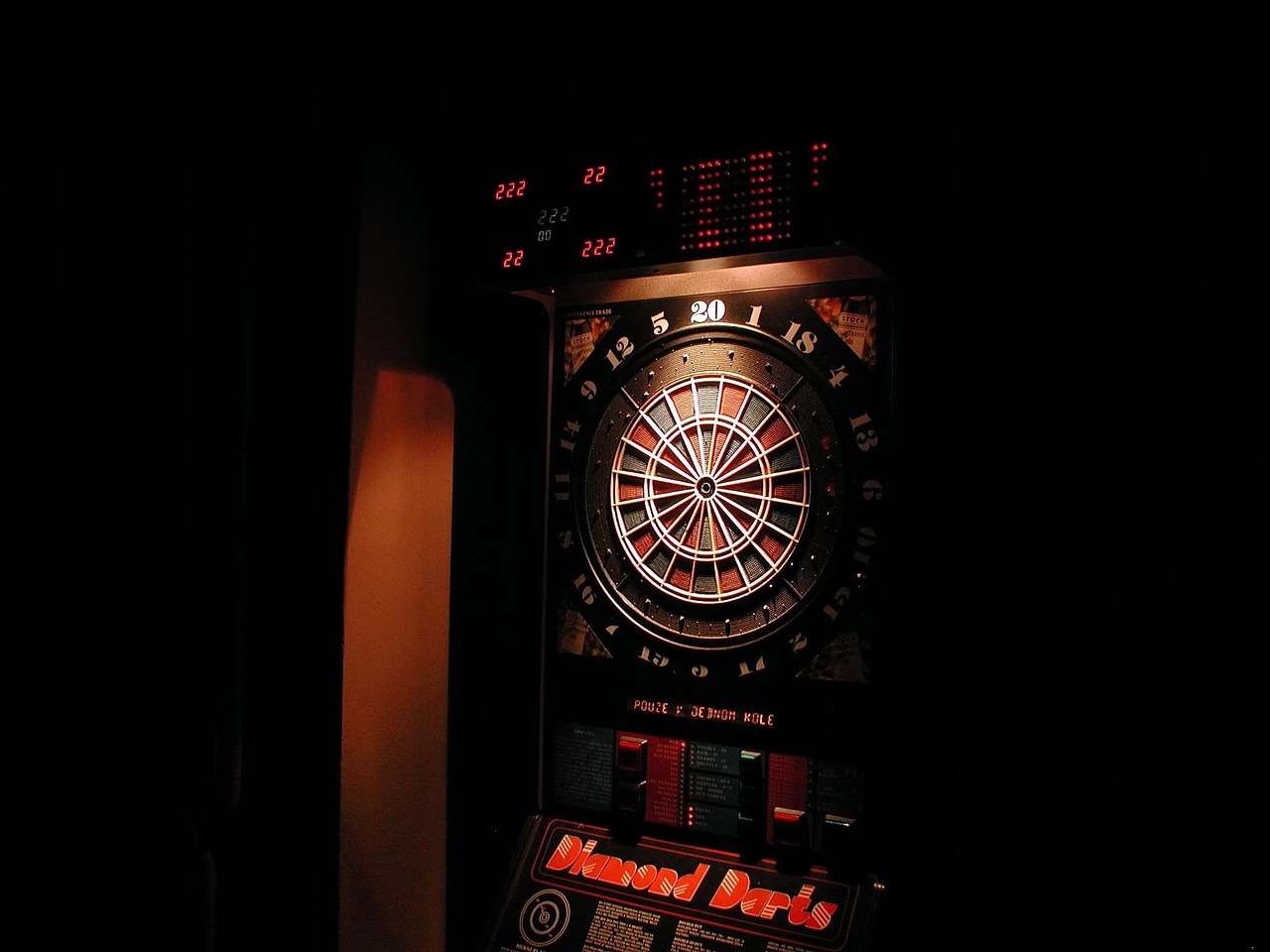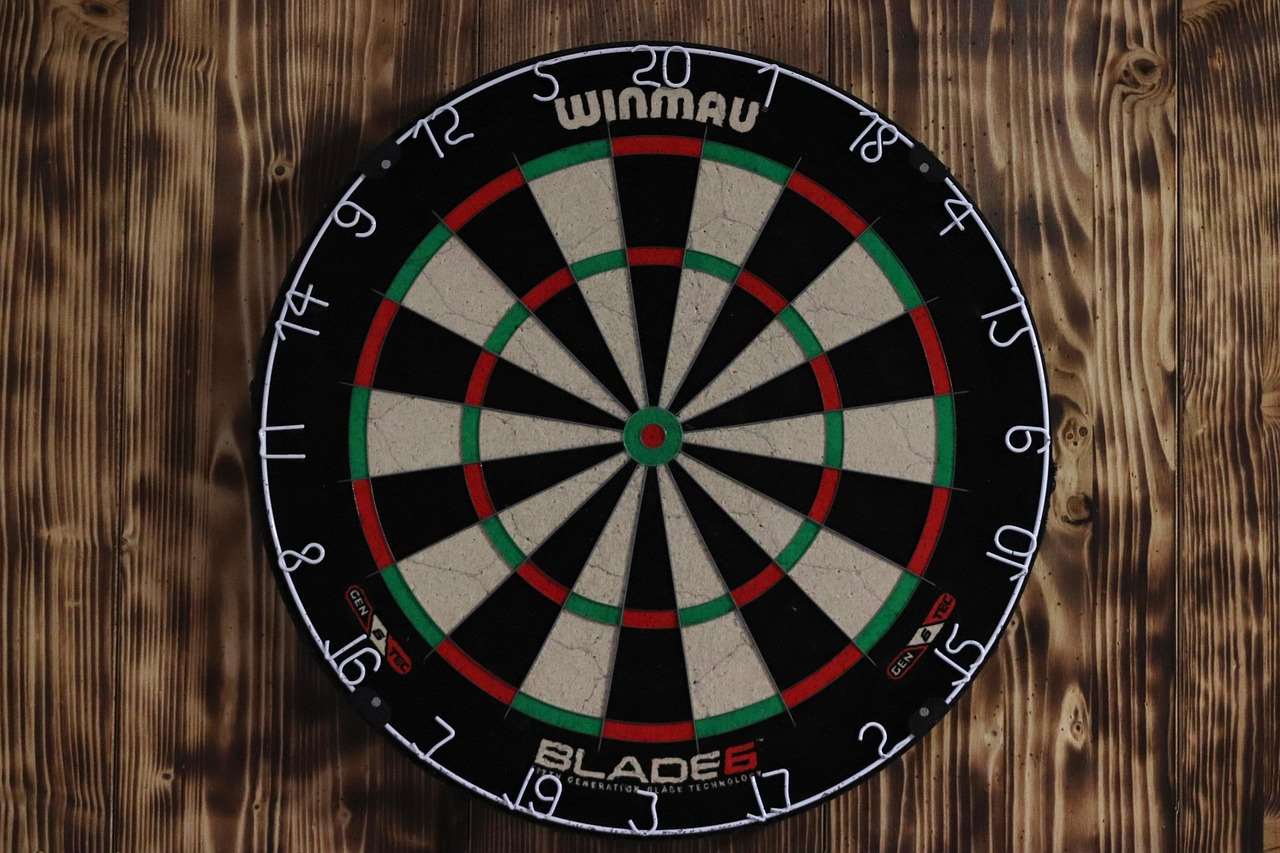Feeling stuck in a darts rut? Many players experience periods where they feel like they’re darts not improving, despite consistent practice. This article dives into the common reasons why your darts game might be plateauing and provides actionable strategies to break through those barriers and reignite your progress.
⚠️ Still Using Pen & Paper (or a Chalkboard)?! ⚠️
Step into the future! The Dart Counter App handles all the scoring, suggests checkouts, and tracks your stats automatically. It's easier than you think!
Try the Smart Dart Counter App FREE!Ready for an upgrade? Click above!
Why Are My Darts Not Improving? Common Roadblocks
It’s incredibly frustrating when you dedicate time to practicing darts but see minimal or no improvement in your performance. Several factors can contribute to this stagnation. Let’s explore some of the most prevalent reasons why your darts game may have hit a wall:
- Inconsistent Stance and Throwing Motion: A shaky foundation leads to inconsistent results.
- Incorrect Grip: A poorly chosen or improperly executed grip can drastically affect your accuracy.
- Mental Game Weakness: Pressure, anxiety, and lack of focus can sabotage even the most skilled players.
- Poor Practice Habits: Repetition without purpose is a recipe for stagnation. Are you truly pushing yourself during practice?
- Equipment Issues: Using ill-suited darts or a damaged dartboard can hinder your progress. You may need to consider what darts do the pros use to get inspired.
- Lack of Focused Training: Simply throwing darts without a structured plan won’t maximize your potential.
- Neglecting Physical Conditioning: While darts isn’t a physically demanding sport, endurance and stability are important.
Diagnosing the Root Cause: Pinpointing Your Darts Plateau
Before you can fix the problem, you need to understand *why* you’re darts not improving. Self-assessment is key. Consider the following questions to identify the areas where you’re struggling:
- Technique: Is your stance stable? Is your throwing motion smooth and repeatable? Do you have any obvious flaws in your technique?
- Equipment: Are your darts the right weight and balance for you? Is your dartboard in good condition?
- Mental Game: Do you get nervous under pressure? Do you lose focus easily? How do you handle setbacks?
- Practice: Do you have a structured practice routine? Are you tracking your progress? Are you practicing the right things?
Be honest with yourself! Identifying your weaknesses is the first step toward improvement. Consider recording your practice sessions to analyze your technique objectively. Alternatively, seek feedback from a more experienced player or coach. You might even find some use from a Darts scorekeeper app to track your progress.

Mastering the Fundamentals: Refining Your Technique
Often, when players find their darts not improving, it’s because they haven’t truly mastered the fundamentals. Even experienced players benefit from revisiting the basics. Here’s what to focus on:
Stance
A solid stance provides a stable base for your throw. Experiment with different stances (straight-on, angled) to find what feels most comfortable and balanced. Key considerations include:
- Foot Placement: Ensure your weight is evenly distributed.
- Body Alignment: Keep your body aligned with the dartboard.
- Balance: Maintain a stable center of gravity.
Grip
The grip is your connection to the dart. A consistent grip is crucial for accuracy. Try different grips (2-finger, 3-finger, 4-finger) to find what works best for you. Key considerations:
- Pressure: Use a relaxed grip; avoid squeezing the dart too tightly.
- Consistency: Maintain the same grip every time.
- Placement: Find the optimal balance point for your grip.
Throwing Motion
A smooth, repeatable throwing motion is essential for consistent accuracy. Focus on these elements:
- Backswing: Keep your elbow high and your backswing controlled.
- Release: Release the dart smoothly and consistently.
- Follow-Through: Follow through with your arm towards your target.

Structuring Your Practice: Smart Training for Real Results
Randomly throwing darts won’t lead to significant improvement. You need a structured practice plan that focuses on your weaknesses and reinforces your strengths. Here’s how to design an effective practice routine to combat darts not improving:
- Set Goals: Define specific, measurable, achievable, relevant, and time-bound (SMART) goals.
- Focus on Weaknesses: Dedicate time to practicing the areas where you struggle the most. If you struggle to 147 checkout darts rules, practice them!
- Vary Your Practice: Avoid monotony by incorporating different drills and games.
- Track Your Progress: Keep records of your scores and analyze your performance to identify areas for improvement.
- Simulate Game Conditions: Practice under pressure to prepare for real competition.
Effective Practice Drills
- Checkout Practice: Focus on mastering common checkout combinations.
- Around the Clock: Aim for each number on the dartboard in sequence.
- Shanghai: Practice hitting the single, double, and treble of a specific number.
- Doubles Practice: Hone your accuracy on doubles, which are crucial for finishing legs.
The Mental Game: Sharpening Your Focus and Resilience
Darts is as much a mental game as it is a physical one. If your darts not improving, it may be because you are not addressing the mental aspects of the game. Mastering your mental game is crucial for consistent performance, especially under pressure. Here’s how to improve your mental toughness:
- Visualization: Mentally rehearse successful throws and game scenarios.
- Positive Self-Talk: Replace negative thoughts with positive affirmations.
- Focus and Concentration: Practice techniques to improve your focus, such as meditation or deep breathing.
- Emotional Control: Learn to manage your emotions and avoid letting frustration or anxiety affect your game.
- Resilience: Develop the ability to bounce back from setbacks and learn from your mistakes.

Equipment Matters: Choosing the Right Darts and Dartboard
Using the right equipment can significantly impact your performance. If you’re darts not improving, it’s worth evaluating your darts and dartboard to ensure they’re not holding you back.
Choosing the Right Darts
- Weight: Experiment with different weights to find what feels most comfortable and controllable.
- Grip: Choose a dart with a grip that suits your throwing style.
- Shape: Different dart shapes affect the flight path and grouping.
- Material: Tungsten darts are more durable and offer a slimmer profile.
Maintaining Your Dartboard
- Rotation: Regularly rotate your dartboard to distribute wear evenly.
- Cleaning: Clean your dartboard periodically to remove dust and debris.
- Replacement: Replace your dartboard when it becomes too worn or damaged.
Breaking Bad Habits: Identifying and Correcting Common Mistakes
Even experienced players can develop bad habits over time. Identifying and correcting these mistakes can lead to significant improvement. If your darts not improving, consider looking for these common faults:
- Rushing Your Throw: Take your time and focus on your technique.
- Aiming Too Much: Trust your instincts and avoid overthinking.
- Moving Your Head: Keep your head still throughout your throw.
- Dropping Your Elbow: Maintain a consistent elbow position.
- Gripping Too Tightly: Relax your grip and let the dart flow naturally.

Seeking Expert Guidance: Coaching and Community Support
Sometimes, you need an outside perspective to help you identify areas for improvement. Consider seeking guidance from a qualified darts coach or joining a local darts league. A coach can provide personalized feedback and help you correct technical flaws. A darts league offers the opportunity to compete against other players and learn from their experiences. Additionally, remember to maintain darts number order.
Benefits of Coaching:
- Personalized Feedback: A coach can identify and correct flaws in your technique.
- Structured Training Plans: A coach can develop a customized practice routine tailored to your needs.
- Motivation and Support: A coach can provide encouragement and help you stay motivated.
Consistency is Key: The Importance of Regular Practice
Ultimately, consistent practice is the most important factor in improving your darts game. Even short, focused practice sessions are more effective than infrequent, lengthy ones. Aim to practice regularly, even if it’s just for 30 minutes a day. The more you practice, the more ingrained your technique will become, and the more consistent your performance will be. Remember to darts mat for better traction.

Conclusion: Reignite Your Darts Journey
If you find your darts not improving, don’t get discouraged! By diagnosing the root cause of your plateau, refining your technique, structuring your practice, sharpening your mental game, and optimizing your equipment, you can break through those barriers and reignite your progress. Remember that improvement takes time and effort, so be patient with yourself and celebrate your successes along the way. The key takeaways are that consistent practice, focused training, and a strong mental game are crucial for breaking through plateaus. Now, take these tips, head to the dartboard, and start practicing with purpose. Your next level of play awaits!
Hi, I’m Dieter, and I created Dartcounter (Dartcounterapp.com). My motivation wasn’t being a darts expert – quite the opposite! When I first started playing, I loved the game but found keeping accurate scores and tracking stats difficult and distracting.
I figured I couldn’t be the only one struggling with this. So, I decided to build a solution: an easy-to-use application that everyone, no matter their experience level, could use to manage scoring effortlessly.
My goal for Dartcounter was simple: let the app handle the numbers – the scoring, the averages, the stats, even checkout suggestions – so players could focus purely on their throw and enjoying the game. It began as a way to solve my own beginner’s problem, and I’m thrilled it has grown into a helpful tool for the wider darts community.